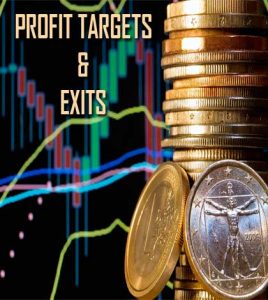Money Management Truth
This article was written by Nial Fuller of Market Geeks to expose some truths and some myths surrounding the topic of managing your trading capital. Most information out there on money management is completely useless and will not work well in professional trading.

They are lying to you about money management best techniques.
“What most traders are taught about money management is usually ‘lies’ invented by the industry to help you lose your money “slower” so that brokers can make more commission / spreads from you.
If you’re using the 2% money management rule, this article may put that theory into question, which is the point… to make you think about it from all angles and perspectives.
I also believe that people who teach the ‘percentage of account’ risk management method don’t truly understand how arbitrary this idea is.
The reason is simple… every trader’s account size will be different and every person’s risk profile, net worth and skill level is different. If you simply take a percentage of money that is in your trading account to risk on each trade, it’s purely arbitrary. What you are prepared to lose or risk on each trade is much more complex than just plucking 2% or 4 % or 10% out of thin air.
Let me explain…
Everyone knows that money management is a crucial aspect of successful forex trading. Yet most people don’t spend nearly enough time concentrating on developing or implementing a money management plan. The paradox of this is that until you develop your money management skills and consistently utilize them on every single trade you execute, you will never be a consistently profitable trader.
I want to give you a professional perspective on money management and dispel some common myths floating around the trading world regarding the concept of money management.
We hear many different ideas about risk control and profit taking from various sources, much of this information is conflicting, and so it’s not surprising that many traders get confused and just give up on implementing an effective forex money management plan… which of course ultimately leads to their account demise.
I have been successfully trading the financial markets for more than a decade and I have mastered the skill of risk to reward and how to effectively utilize it to grow small sums of money into larger sums of money relatively quickly.
Money Management Myths:
Myth 1: Traders should focus on pips
You may have heard that you should concentrate on pips gained or lost instead of dollars gained or lost. The rationale behind this money management myth is that if you concentrate on pips instead of dollar you will somehow not become emotional about your trading because you will not be thinking about your trading account in monetary terms but rather as game of points. If this doesn’t sound ridiculous to you, it should.
The whole point of trading and investing is to make money and you need to be consciously aware of how much money you have at risk on each and every trade so that the reality of the situation is effectively conveyed.
Do you think business owners treat their quarterly profit and loss statements as a game of points that is somehow detached from the reality of making or losing real money? Of course not, and when you think about it in these terms it seems silly to treat your trading activities like a game.
Trading should be treated as a business, because that’s what it is, if you want to be consistently profitable you need to treat each trade as a business transaction.
Just as any business transaction has the possibility of risk and of reward, so does every trade you execute. The bottom line is that thinking about your trades in terms of pips and not dollars will effectively make trading seem less real and thus open the door for you to treat it less seriously than you otherwise would.
From a mathematical standpoint, thinking of trading in terms of “how many pips you lose or gain” is completely irrelevant. The problem is that each trader will trade a different position size, thus, we must define risk in terms of “dollars at risk or dollars gained”.
Just because you risk a large amount of pips, does not mean you are risking a large amount of your capital, such is the case that if you have a tight stop this does not mean you’re risking a small amount of capital.
Myth 2: Risking 1% or 2% on every trade is a good way to grow your account
This is one of the more common money management myths that you are likely to have heard. While it sounds good in theory, the reality is that the majority of retail forex traders are starting with a trading account that has $5,000 in it or less. So to believe that you will grow your account effectively and relatively quickly by risking 1% or 2% per trade is just silly.
Say you lose 5 trades in a row, if you were risking 2% your account is now down to $4,519.60, now you are still risking 2% per trade, but that same 2% is now a smaller position size than it was when your account was at $5,000.
Thus, in the % risk model, as you lose trades you automatically reduce your position size. Which is not always the best course of action.
There’s psychological evidence that suggests it’s human nature to become more risk averse after a series of losing trades and less risk averse after a series of winning trades, but that doesn’t mean the risk of any one trade becomes more or less simply because you lost or won on your previous trade… your previous trade’s results don’t mean anything for the outcome of your next trade.
What ends up happening when traders use the % risk model is that they start off good, they risk 1 or 2% on their first few trades, and maybe they even win them all. But once they begin to hit a string of losers, they realize that all of their gains have been wiped out and it is going to take them quite a long time just to make back the money they have lost.
They then proceed to OVER-TRADE and take less-than-quality setups because they now realize how long it will take them just to get back to break if they only risk 1% to 2% per trade.
So, while this method of money management will allow you to risk small amounts on each trade, and therefore theoretically limit your emotional trading mistakes, most people simply do not have the patience to risk 1 or 2% per trade on their relatively small trading accounts, it will eventually lead to over-trading which is about the worst thing you can do for your bottom line.
It is also a difficult task to recover from a draw down period. Remember, once you are drawn down, using a 2 % per trade method, your risk for each trade will be smaller, therefore, your rate of recovery on profits is slower and hinders the traders effort and ultimately leads to frustration and possibly other psychological problems.
The Most Important Fact is this… if you start with $10,000, and get drawn-down to $5,000, using a fixed % method, it will take you “much longer” to recover because you started out risking 2% per trade which was $200, but at the $5,000 draw-down level, you’re only risking $100 per trade, so even if you have a good winning streak, your capital is recovering at “half the rate” it would using a “fixed $ per trade risk.
Myth 3: Wider stops risk more money than smaller stops
Many traders erroneously believe that if they put a wider stop loss on their trade they will necessarily increase their risk. Similarly, many traders believe that by using a smaller stop loss they will necessarily decrease the risk on the trade. Traders that are holding these false beliefs are doing so because they do not understand the concept of forex position sizing.
Position sizing is the concept of adjusting your position size or the number of lots you are trading, to meet your desired stop loss placement and risk size. For example, say you risk $200 per trade, with a 100 pip stop loss you would trade 2 mini-lots: $2 per pip x 100 pips = $200.
Now let’s say you want to trade a pin bar forex strategy but the tail is exceptionally long but you would still like to place your stop above the high of the tail even though it will mean you have a 200 pip stop loss. You can still risk the same $200 on this trade, you just need to adjust your position size down to meet this wider stop loss, and you would adjust the position down to 1 mini-lot rather than 2.
This means you can risk the same amount on every trade simply by adjusting your position size up or down to meet your desired stop loss width.
Let’s now look at an example of what can happen if you don’t practice position sizing effectively by failing to decrease the number of lots you are trading while increasing stop loss distance.
Example: Two traders risk the same amount of lots on the same trade setup.
Forex Trader A risks 5 lots and has a stop loss of 50 pips; Trader B also risks 5 lots but has a stop loss of 200 pips because he or she believes there is an almost 100% chance that the trade will not go against him or her by 200 pips.
The fault with this logic is that typically if a trade begins to go against you with increasing momentum, there theoretically is no limit to when it may stop. And we all know how strong the trends can be in the forex market.
Trader A has gotten stopped out with his or her pre-determined risk amount of 5 lots x 50 pips which is a loss of $250.
Trader B also got stopped out but his or her loss was much larger because they erroneously hoped that the trade would turn around before moving 200 pips against them. Trader B thus loses 5 lots x 200 pips, but their loss is now a whopping $1,000 instead of the $250 it could have been.
We can see from this example why the belief that just widening your stop loss on a trade is not an effective way to increase your trading account value, in fact it is just the opposite: a good way to quickly decrease your trading account value.
The fundamental problem that afflicts traders who harbor this believe is a lack of understanding of the power of risk to reward and position sizing.
The Power of Risk to Reward
Professional traders like me and many others concentrate on risk to reward ratios, and not so much on over analyzing the markets or having unrealistically wide profit targets. This is because professional traders understand that trading is a game of probabilities and capital management. It begins with having a definable market edge, or a trading method that is proven to be at least slightly better than random at determining market direction.
The power of risk to reward comes in with its ability to effectively and consistently build trading accounts. We all hear the old axioms like “let your profits run” and “cut your losses early”… while these are well and fine, they don’t really provide any useful information for new traders to implement.
The bottom line is that if you are trading with anything less than about $25,000, you are going to have to take profits at pre-determined intervals if you want to keep your sanity and your trading account growing.
Entering trades with open profit targets typically doesn’t work for smaller traders because they end up never taking the profits until the market comes swinging back against them dramatically.
(I think this is very important, go back an re-read that last sentence.)
Because taking your profits is how you get paid.
If you get greedy or fearful of losing, you might make mistakes. So knowing ahead of time where you’re going to take profit becomes very important. This means setting your take profits at fixed levels so that your exit is automatic.
Cynthia’s Color Ribbon Surfing System teaches you how to know the key levels and how to use them for profit targets.

If you know your win rate is between 40-50% than you can consistently make money in the market by implementing simple risk to reward ratios. By learning to use well-defined price action setups to enter your trades you should be able to win a higher percentage of your trades, assuming you TAKE profits.
Let’s Compare 2 Examples –
One Trader Using the 4 % Rule, and one Trader using Fixed $ Amount.
Example 1 –
You have a risk to reward ratio of 1:3 on every trade you take. This means you will make 3 times your risk on every trade that hits your target, if you win on only 50% of your trades, you will still make money.
Let’s say your trading account value is $5,000 and you risk a fixed $200 per trade.
You lose your 1st trade = $5,000 – $200 = $4,800
You lose your 2nd trade = $4,800 – $200 = $4,600
You win your 3rd trade = $4,600+$600 = $5,200
You win your 4th trade = $5,200+$600 = $5,800
From this example we can see that even losing 2 out of every 4 trades you can still make very decent profits by effectively utilizing the power of risk to reward ratios. For comparison purposes, let’s look at this same example using the 4% per trade risk model:
Example 2 –
Once again, your trading account value is $5,000 but you are now risking 4% per trade (so that both examples start out with a risk of $200 per trade).
Remember, you have a risk to reward ratio of 1:3 on every trade you take. This means you will make 3 times your risk on every trade that hits your target, and if you win only 50% of your trades, you will still make money.
You lose your 1st trade = $5,000 – $200 = $4800
You lose your 2nd trade = $4800 – $192 = $4608
You win your 3rd trade = $4608 + $552 = $5160
You win your 4th trade = $5160 + $619 = $5780
Now we can see why risking 4% (or 2% etc) of your account on each trade is not as efficient as the trader using the fixed $ amount.
Important to note that after 4 trades, risking the same dollar amount per trade and effectively utilizing a risk to reward ratio of 1:3, using fixed $ risk per trade, the first trader’s account is now up by $800 versus $780 on the 4% risk account.
Now, if the trader using % risk rule had a draw down period and lost 50% of their account, they effectively have to make back 100% of their capital to be back at break even, now, this may also be so for the trader using the fixed $ risk method, but which trader do you think has the best chance of recovering?
Seriously, it could take a very long time to recover from a draw down using the % risk method.
Sure, some will argue that you can be drawn down heavier and it’s more risky to use the fixed $ method, but we are talking about real world trading here, I need to use a method that gives me a chance to recover from losses, not just protect me from losses. With a good trading method and experience, you can use the fixed $ method, which is why I wanted to open your eyes to it.
In Summary
The power of the money management techniques discussed in this article lies in their ability to consistently and efficiently grow your trading account.
There are some underlying assumptions with these recommendations however, mainly that you are trading with money you have no other need for, meaning your life will not be directly impacted if you do lose it all.
This is important because you need to keep the ‘fear factor’ under control. Trading with desperation or fear makes you trade with poor decisions and can have dire results to your account and impact your ability to trade well in the future.
NOTE: IF YOU NEED HELP WITH MENTAL/EMOTIONAL CONDITIONS THAT ARE AFFECTING YOUR TRADING DECISIONS, PLEASE TAKE A LOOK AT THE TRADER’S GUIDED MEDITATION VIDEOS HERE.
You also must keep in mind that the whole idea of risk to reward strategies revolves around having an effective edge in the market and knowing when that edge is present and how to use it.
While I do not recommend traders use a set risk percentage per trade, I do recommend you risk an amount you are comfortable with; if your risk is keeping you up at night than it is probably too much….repeat that: IF YOUR LOTSIZE (RISK) IS KEEPING YOU UP AT NITE THAN IT IS PROBABLY TOO MUCH.
If you have $10,000 you may risk something like $200 or $300 per trade… as a set amount, or whatever you are comfortable with… it may be a lot less, but it must be constant.
Also remember, professional traders have learned to judge their setups based on the quality of the setup, otherwise known as discretion. This comes through screen time and practice, as such; you should develop your skills on a demo account before switching to real money. I usually recommend doubling or even tripling your demo acct before trading with real money.
The money management strategy discussed in this article provides a realistic way to effectively grow your account without evoking the feeling of needing to over-trade which so often happens to traders who practice the % risk method of forex money management.”
Good luck with your trading!
Written by Nial Fuller of Market Geeks
Happy Trading from Cynthia of Day Trade Forex!

“Trading from the beaches of Mexico! You can too!”

